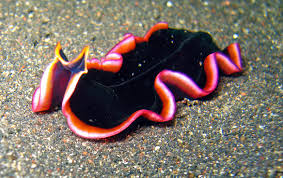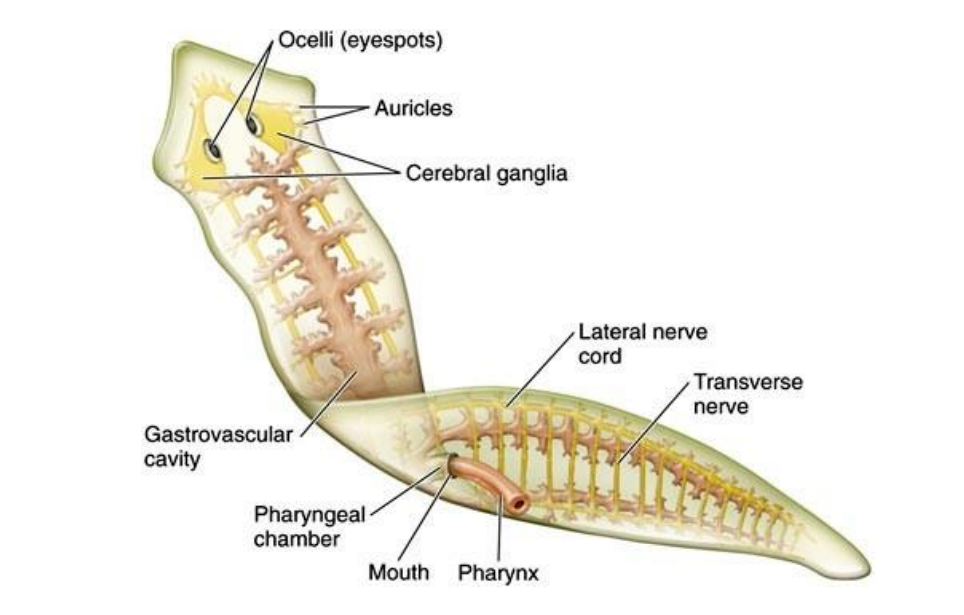Platyhelminthes

These creatures, also known as flatworms, can look just like other worms or come in a stunning array of bright colours. They can live in a wide variety of places, from the inside of a human’s liver to the ocean. Living in such environments leads to the necessity of locomotion, and of being able to tell where you are going. Let’s explore how bilateral symmetry plays a role in this:
Bilateral symmetry (symmetry where the left and right side of the animal is a mirror image) leads to cephalization, where a “head” region begins to develop:

Cerebral ganglia, a primitive form of a brain, begins to develop at the anterior (front) of the animal. Sensory organs, such as eyespots, are also located in this region. This gives the worm the ability to move in a “forwards” direction, leading with the anterior and following with the posterior (back). Image credit Life Sciences 11 Notes.
